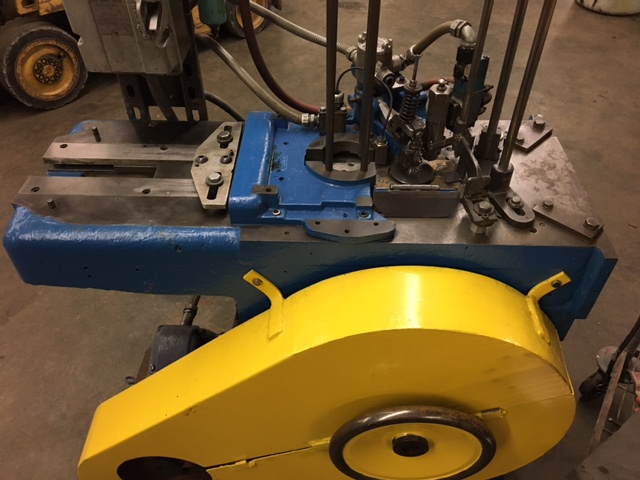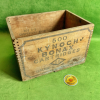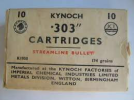Thanks for that. Just not quite sure how to respond. It seems like a couple of my interests (railways & IMI) have come together.I worked on the ledger in the supply department for Summerfield my claim to fame Dad wanted to go down to Hereford to work for what ever part was near there this was in the 60's he was in the loco sheds so it would be on fleet management
-
Welcome to this forum . We are a worldwide group with a common interest in Birmingham and its history. While here, please follow a few simple rules. We ask that you respect other members, thank those who have helped you and please keep your contributions on-topic with the thread.
We do hope you enjoy your visit. BHF Admin Team -
HI folks the server that hosts the site completely died including the Hdd's and backups.
Luckily i create an offsite backup once a week! this has now been restored so we have lost a few days posts.
im still fixing things at the moment so bear with me and im still working on all images 90% are fine the others im working on now
we are now using a backup solution
You are using an out of date browser. It may not display this or other websites correctly.
You should upgrade or use an alternative browser.
You should upgrade or use an alternative browser.
Zenoura
New Member
Thanks to all of you for the response, I'm sorry I never came back to this forum to continue, because the Museum Project was in a delay, but now we are back working on it.
Yes, I have all the information you gave-me about the LEMCO (Liebig Extracting Meat Company) here in Paraguay because we ellaborate a book about "Liebig Company in Paraguay". Most of the information we already published on Internet in the latest years.
The fact is about a lot of machinery from 1900 to 1970 that where abandoned inside the factory.
Now, the factory is a place for events, with capacity of 3 different events at the same time. You can see the restoraton that has been made in the last 5 years here https://www.puertoliebig.com.py
Our first main goal now is to use our place for events, like company events, marry, 15 years (the south american version of sweet 16) but we want to create a guided visit to the rest of the old factory, because it was an important company in the development of our country. I'm getting all the information that I can, about the old machines that where used in the past.
Most of ex-employees are dead (the factory was working until 1978) and there are some still alives, but they cannot remember everything and most of them where working in different places of the factory so they can know about one of the machines, but not all of them.
That's the reason I approach to this forum, in case some of you can provide me more information.
The responde about the Kynoch Birmingham Nro. 7, from Richard Dye was very important to me, because maybe is like you said, this machine was used to stamp something in the bottom of the can. In that time, Liebig was canning processed meat. Maybe the bottom of the can had an stamp made by this machine.
If somebody can at least provide me information about the year of this machine, or something like that, it would be very helpfull to me.
There is also a lot of other machinery, a few "Litton's Machine Tool", "D. Mitchell Keighley", "F. Pollard", some "Max-Ams" and others.
PD: sorry for my poor english, again.
Yes, I have all the information you gave-me about the LEMCO (Liebig Extracting Meat Company) here in Paraguay because we ellaborate a book about "Liebig Company in Paraguay". Most of the information we already published on Internet in the latest years.
The fact is about a lot of machinery from 1900 to 1970 that where abandoned inside the factory.
Now, the factory is a place for events, with capacity of 3 different events at the same time. You can see the restoraton that has been made in the last 5 years here https://www.puertoliebig.com.py
Our first main goal now is to use our place for events, like company events, marry, 15 years (the south american version of sweet 16) but we want to create a guided visit to the rest of the old factory, because it was an important company in the development of our country. I'm getting all the information that I can, about the old machines that where used in the past.
Most of ex-employees are dead (the factory was working until 1978) and there are some still alives, but they cannot remember everything and most of them where working in different places of the factory so they can know about one of the machines, but not all of them.
That's the reason I approach to this forum, in case some of you can provide me more information.
The responde about the Kynoch Birmingham Nro. 7, from Richard Dye was very important to me, because maybe is like you said, this machine was used to stamp something in the bottom of the can. In that time, Liebig was canning processed meat. Maybe the bottom of the can had an stamp made by this machine.
If somebody can at least provide me information about the year of this machine, or something like that, it would be very helpfull to me.
There is also a lot of other machinery, a few "Litton's Machine Tool", "D. Mitchell Keighley", "F. Pollard", some "Max-Ams" and others.
PD: sorry for my poor english, again.
Richard Dye
master brummie
Let me try to dig a little further. Max Ams was a company based in New England (US). The made seaming or sometimes called closers for putting the ends on the can. They also made machines for making the can bodies with the seam on the side. At one point in my career I was GM Engineering for Borden Can & Machinery. They were a very old company and the largest producer of can making equipment in the world. A significant customer was Metal Box a UK based can maker. Both of those companies were contemporaries of Liebig.Thanks to all of you for the response, I'm sorry I never came back to this forum to continue, because the Museum Project was in a delay, but now we are back working on it.
Yes, I have all the information you gave-me about the LEMCO (Liebig Extracting Meat Company) here in Paraguay because we ellaborate a book about "Liebig Company in Paraguay". Most of the information we already published on Internet in the latest years.
The fact is about a lot of machinery from 1900 to 1970 that where abandoned inside the factory.
Now, the factory is a place for events, with capacity of 3 different events at the same time. You can see the restoraton that has been made in the last 5 years here https://www.puertoliebig.com.py
Our first main goal now is to use our place for events, like company events, marry, 15 years (the south american version of sweet 16) but we want to create a guided visit to the rest of the old factory, because it was an important company in the development of our country. I'm getting all the information that I can, about the old machines that where used in the past.
Most of ex-employees are dead (the factory was working until 1978) and there are some still alives, but they cannot remember everything and most of them where working in different places of the factory so they can know about one of the machines, but not all of them.
That's the reason I approach to this forum, in case some of you can provide me more information.
The responde about the Kynoch Birmingham Nro. 7, from Richard Dye was very important to me, because maybe is like you said, this machine was used to stamp something in the bottom of the can. In that time, Liebig was canning processed meat. Maybe the bottom of the can had an stamp made by this machine.
If somebody can at least provide me information about the year of this machine, or something like that, it would be very helpfull to me.
There is also a lot of other machinery, a few "Litton's Machine Tool", "D. Mitchell Keighley", "F. Pollard", some "Max-Ams" and others.
PD: sorry for my poor english, again.
Richard Dye
master brummie

This is a D&A compound liner to make the seal on the can ends.
Richard Dye
master brummie
Just for the record I think you may be referring to D. Mitchell and Company, based at Keighley, Yorkshire. They were machine-tool makers established in 1892.
D. Mitchell and Co
Jump to:navigation, search
1905

Lathe at Calderdale Industrial Museum
1892 PARTNERSHIP his been dissolved between Messrs. Mitchell and Whitaker, machine-tool makers, Lawkholme-in-Keighley[1]
1896 Partnership dissolved: Mitchell and Holmes, machine tool makers, Lowkholme [2]
D Mitchell & Co of Central Iron Works, Lawkholme, and Parsonage Works, Keighley, Yorks
1905 Makers of lathes, radial arm drilling machines, shaping and slotting machines, saw benches.
1937 Machine tool manufacturers. [3]
1950 'A Keighley tool firm is taken over. Formed almost a century ago, the machine tool firm of Darling and Sellers Ltd., Airedale Works, Lawkholme Lane, Keighley, has been taken over jointly by D. Mitchell and Co., Ltd., Central Ironworks. Parson Street, Keighley, and Rushworth and Co., engineers, of Sowerby Bridge. In its early days, Darling and Sellers produced metal working machines of all types and was registered as a limited company in 1896. Until 1935 the firm produced a comprehensive range of machine tools, including lathes, planers, plano-millers, spur and bevel gear cutters, radial drills and moulding machines. During the last war output was concentrated on tools for Britain's ordnance factories and in more recent years the firm has specialised in high-class centre lathes, which find a ready home and export markets.
CENTRE LATHES EXPANSION
Following completion of existing commitments, production of the "Mitchell" 10 1/2in. and 16 1/2in. centre lathes is to be stepped-up, which will mean doubling the existing staff. New plant is already being installed while the factory is to be modernised and will include a canteen and other welfare amenities.
The newly-appointed directors are Messrs. P. Leslie Crabtree. John W. Rushworth, C. Donald Rushworth and Sidney Wilson.'[4]
1967 Taken over by B. Elliott and Co.
Correct Pedro, it is them........
Richard Dye
master brummie
Let me try to dig a little further. Max Ams was a company based in New England (US). The made seaming or sometimes called closers for putting the ends on the can. They also made machines for making the can bodies with the seam on the side. At one point in my career I was GM Engineering for Borden Can & Machinery. They were a very old company and the largest producer of can making equipment in the world. A significant customer was Metal Box a UK based can maker. Both of those companies were contemporaries of Liebig.
Richard Dye
master brummie
Zenoura, let us know if you have more machinery names and we can try to find the. There is a used can equipment dealer in upstate NY that is run by a friend of mine, Melvina Can Machinery, their name is on the compound liner picture. They are a good source.Thanks to all of you for the response, I'm sorry I never came back to this forum to continue, because the Museum Project was in a delay, but now we are back working on it.
Yes, I have all the information you gave-me about the LEMCO (Liebig Extracting Meat Company) here in Paraguay because we ellaborate a book about "Liebig Company in Paraguay". Most of the information we already published on Internet in the latest years.
The fact is about a lot of machinery from 1900 to 1970 that where abandoned inside the factory.
Now, the factory is a place for events, with capacity of 3 different events at the same time. You can see the restoraton that has been made in the last 5 years here https://www.puertoliebig.com.py
Our first main goal now is to use our place for events, like company events, marry, 15 years (the south american version of sweet 16) but we want to create a guided visit to the rest of the old factory, because it was an important company in the development of our country. I'm getting all the information that I can, about the old machines that where used in the past.
Most of ex-employees are dead (the factory was working until 1978) and there are some still alives, but they cannot remember everything and most of them where working in different places of the factory so they can know about one of the machines, but not all of them.
That's the reason I approach to this forum, in case some of you can provide me more information.
The responde about the Kynoch Birmingham Nro. 7, from Richard Dye was very important to me, because maybe is like you said, this machine was used to stamp something in the bottom of the can. In that time, Liebig was canning processed meat. Maybe the bottom of the can had an stamp made by this machine.
If somebody can at least provide me information about the year of this machine, or something like that, it would be very helpfull to me.
There is also a lot of other machinery, a few "Litton's Machine Tool", "D. Mitchell Keighley", "F. Pollard", some "Max-Ams" and others.
PD: sorry for my poor english, again.
Richard Dye
master brummie
Zenoura, let us know if you have more machinery names and we can try to find the. There is a used can equipment dealer in upstate NY that is run by a friend of mine, Melvina Can Machinery, their name is on the compound liner picture. They are a good source.
Home - Melvina Can Machinery | Can Seamers and Parts | Shop
Melvina Can Machinery specializes in rebuilding and tooling can seamers as well as offering new and used can seamer parts. We also rebuild can machinery.
 melvinacan.com
melvinacan.com
Zenoura
New Member
I really hope some day you had the opportunity to travel to my country Paraguay. My country is very unknown, but is full of treasure.
If you are going to came to Paraguay, I will take yours to a tour to the Museum of the Old Liebig Factory. There is a lot of rooms in the factory with a lof of metal, iron, machinery, old, and we maybe will never had the enough amount of money to restore and make accesible to everybody. But you my friends will have an opportunity.
British engineers worked in my country in the XIX century, we had one of the first trains in south america, all installed by the british. We have a lot of history, old furnaces, old machinery and sadly, the authorities of my country didn't care about that, they let pieces of our history to be geting rusty and forgotten.
Thank you all for the information
If you are going to came to Paraguay, I will take yours to a tour to the Museum of the Old Liebig Factory. There is a lot of rooms in the factory with a lof of metal, iron, machinery, old, and we maybe will never had the enough amount of money to restore and make accesible to everybody. But you my friends will have an opportunity.
British engineers worked in my country in the XIX century, we had one of the first trains in south america, all installed by the british. We have a lot of history, old furnaces, old machinery and sadly, the authorities of my country didn't care about that, they let pieces of our history to be geting rusty and forgotten.
Thank you all for the information
Josephine Chapman
knowlegable brummie
My grandfather Les Chapman worked in the Rolling mills then.Astonian, if you worked in the rolling mills at witton you may have come across my dad Fred Kemp. He worked there from 1947 till 1988.
Richard Dye
master brummie
Wonderful boxes with those dove tail joints!
bren
master brummie
Not been on here for some time and have been looking at some of the old threads and came across this. I think it was about 1973 and i had just walked out of a job as a mechanic and popped into IMI to see if they had any vacancies in their garage, was told no but there was jobs going in various departments on the site so agreed to go for an interview and was sent to the Strip Mill. Completely different to what i was used to but Fred Kemp, area 3 supervisor, gave me a trial that led to me working for him for many years and being trained on every process, good for me as you was paid more the more you could do. I can't remember the year but when Fred was promoted to shift manager i applied and got his old job, he was still there when i left, not long before they closed the place.Astonian, if you worked in the rolling mills at witton you may have come across my dad Fred Kemp. He worked there from 1947 till 1988.



